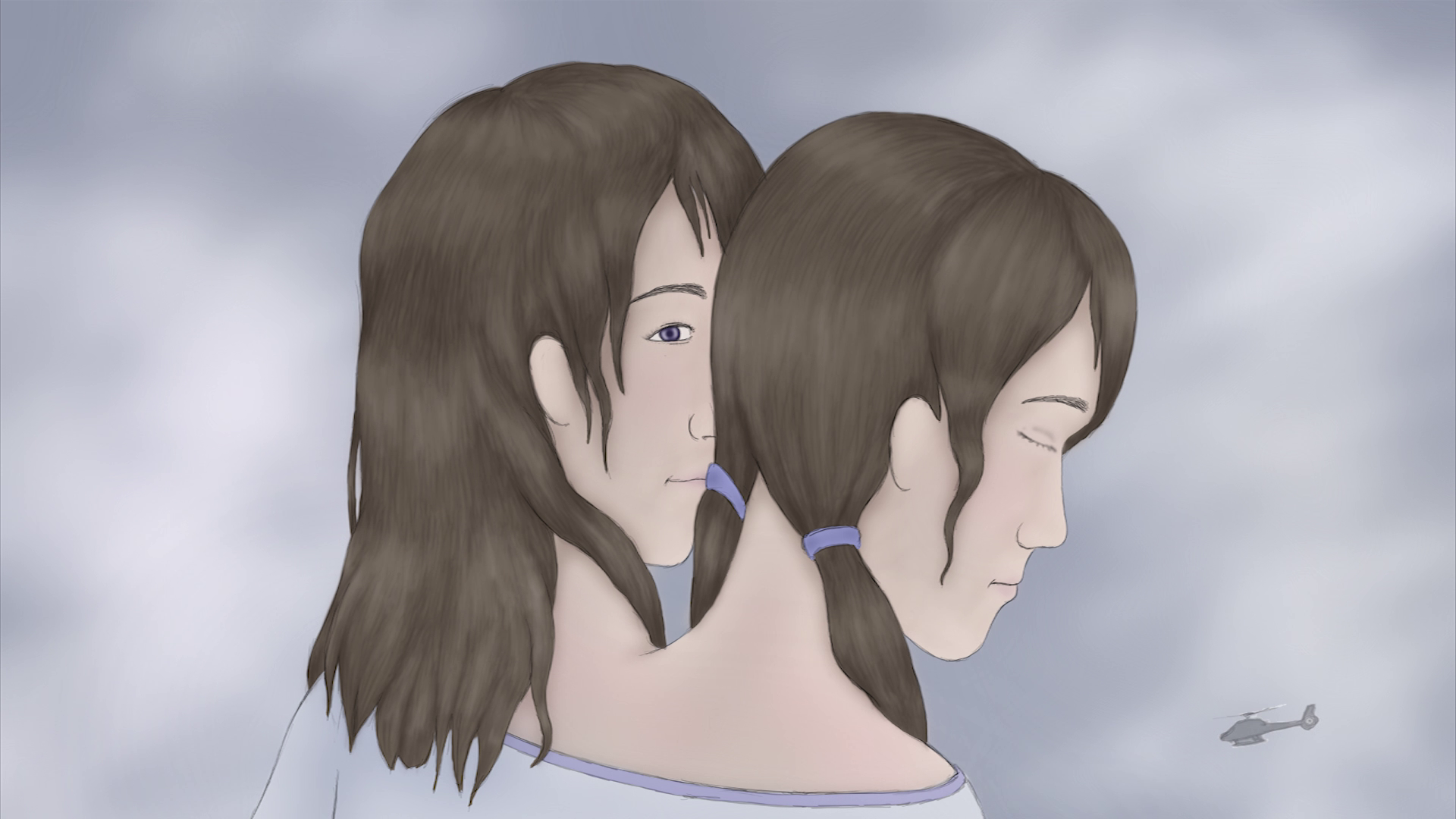“Andrea Crespo: A day in the lives of” is copresented by Rhizome and the New Museum as part of First Look: New Art Online. It is now on view on the front page of Rhizome.org.
_(1).png)
Cynthia and Celinde are conjoined twins who live in the mind of their autistic host. You will be joining them today in their myriad adventures. You may have already gotten to know them a bit in the computational network community they usually hang out in, whether on DeviantArt or elsewhere. This is the first time they are out and about in the world, and boy do they have a lot to show and tell. You will learn lots about machinic death drive and changelings. Be wary of metaphorization. They don’t like it when you expect them to teach you about yourself through their body. Rather, they prefer to teach through being in the world. Buckle up and enjoy your trip!
Cynthia and Celinde are seen buckled into a single seat in an otherwise empty cockpit in the final frames of Andrea Crespo’s new video A day in the lives of (2016), surrounded by a clear blue sky splashed with clouds.
What was known about Cynthia and Celinde up until this journey? Certainly they had never been seen in such a vibrant setting. Crespo’s previous video sis : parabiosis (2015) visualizes their source material: shadowy outlines of manga-like girls, conjoined or in mirrored poses; medical charts (for instance, “Table 16.2: Four main types of autoscopic phenomena”); long lists of terms that grasp their condition—“born multiple,” “self-pluralism,” “neurodiversity,” “otherkin,” among them. These materials flash past us, swiped by the light of a scanner or an EMDR light bar (a treatment tool sometimes used in psychotherapy), compressed, encoded, mapped and remapped by the obsession of an unseen author—or host. In virocrypsis (2015), they have taken form (“We took this body and made it our own”) and appear amid sleek, watery planes of black and grey, a cold, amorphous environment that pulses with the brightness of a laboratory and the glow of a screen but is somehow warmed by the twins’ tenderness and palpable vulnerability.
“Hi. Hello again.” A day in the lives of opens with Cynthia and Celinde greeting the viewer, as they overlook a river lapping against an ashen skyline. “We have lots to show you, lots to tell you.” We trail Cynthia and Celinde as they drive a car (“I absolutely love driving,” they intone); upload a “very special payload,” which looks like the contents of a chat forum, to the cargo hold of a plane; walk through a laboratory where they “invite their subjects to play”; and find themselves, finally, in the cockpit. A day reverberates with sounds at a volume a tick higher than expected: the whirring of plane engines, cars passing on the highway, rain falling. These are “stimmy” sounds, ones that match the bodily feeling of perseveration, and they thrill and calm the twins.
In the cockpit, as they face forward, one hand delicately on the dash, their dialogue—elsewhere called a “soliloquy in plural”1—winks at the viewer:
We have plane
Roger that, sis.
I guess you could call that a metaphor too.
But, doesn’t that make you wonder,
Who, or what, we are?”
We may be changelings but, we’re no stand-ins.
This distinction—changelings, not stand-ins—is key for the twins. Cynthia and Celinde are not depicted as “stand-ins” for a specific disorder, dysfunction, or desired but unattainable real (“Be wary of metaphorization”). Rather, they are unpredictable and alive: an expansive, chimerical substitute for a body and mental state delimited by strictures of normativity. A day in the lives of sets them free, ready to teach by being in the world.
“Andrea Crespo: A day in the lives of” is commissioned by Rhizome and copresented with the New Museum as part of First Look: New Art Online.
1 Kari Rittenbach, “Andrea Crespo,” CURA. magazine, Spring 2016.
Sponsors
The Rhizome Commissions Program is supported by the Jerome Foundation, GIPHY, American Chai Trust, the National Endowment for the Arts, the New York City Department of Cultural Affairs, and the New York State Council on the Arts with the support of Governor Andrew M. Cuomo and the New York State Legislature.

Major support for First Look is provided by the Neeson / Edlis Artist Commissions Fund. Additional support is provided by the Toby Devan Lewis Emerging Artists Exhibitions Fund and the Andy Warhol Foundation for the Visual Arts.


